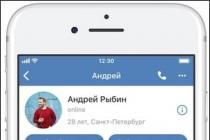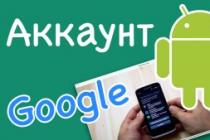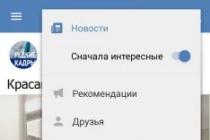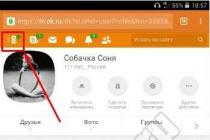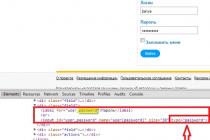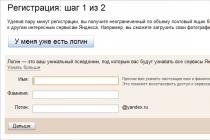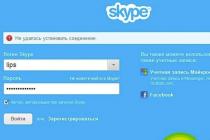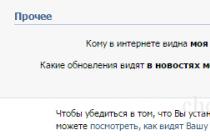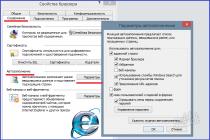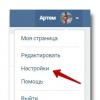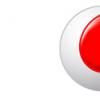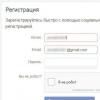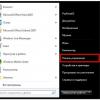md. Black River, 15 Russia, St.Peterburg 8 812 497 19 87
Promotion of events using VKontakte. Enough unusual way

SHARED
Of course, now there are many ways how you can recruit people for an upcoming event: conference, seminar, webinar, training, etc.

What I will share below is an additional tool that you definitely need to test in your business.
ATTENTION: it will not suit everyone. And some will even consider it unethical.
Remember, common sense is everywhere. My goal: to give you a really working tool, but how you will use it at home is another question.
A little background:
One evening, I was flipping through the VKontakte news feed. I rarely pay attention to the targeted ads on the left. usually someone's faces flicker there, absolutely not interesting to me. And suddenly…
… I see an avatar of my very good friend in the ad.
My gaze immediately goes to the left. I read the heading: “I have applied for ...” (there was a certain conference indicated).
Agree: it's curious when you see a photo of your friend, and even with such a title.
Now I could not sit still, tk. my inquiring mind demanded an answer to how they did it.
Having spent 10 minutes with my brains, I understood what the point is ...
Promotion of events using this method?
At first I thought to paint everything in text form, but I decided to shoot a video about this.
After viewing, several questions may arise at once:
Again, I will focus on common sense. Yes, this method is not suitable in all cases.
However, as you saw from the example above, I was very curious about what kind of conference they advertised.
Draw your own conclusions!
That's all for me 😉
P.S. If you found this article helpful, subscribe to blog updates and recommend it to your friends, especially those interested in promoting their events.
]
12 ways to recruit a group for training Have you ever had a situation where you come up withwonderful training, training program or therapy group, launched an advertisement, told everyone who could be that soon you have a grand event, and 2.5 people came to you, which even the rent of the hall cannot be recaptured?
I faced this problem all the time before! It even happened that not a single person came. But how, so?
I have such a cool training, I thought of it for so long, tried so hard, did not sleep at night ... And now the "X" day comes, and the people of "X-Renushki"!
But if this continues from time to time, the demotivation to organize your group activities is higher each time. A thought begins to creep in
- Am I good for anything at all, since people don't come to me?
- Have I come up with a topic that no one needs?
- Can someone arrange a training for me? And even if someone undertakes to recruit people for you, he will take not a weak percentage for it ...
- Can't I get a group myself?
But fortunately,
Practical seminar - specific technologies that have proven their effectiveness
In order to solve this problem, you need to master a few tricky sales tactics for your group activities Moreover, most tactics are perfectly do not require in excess of investments in advertising and promotion. Even with the resources you currently have you can significantly increase the number of people who will come to you for trainings.
I invite you to a seminar, the goal of which is to solve this problem once and for all!
Seminar
12 ways to recruit a group in psychological practice
Whatever you take a pig in a poke, I'll briefly talk about some of the methods ...
1.Full information
The problem of recruiting a group for training is what do you sell "air"... After all, your training cannot be felt like an iron or a washing machine. Moreover, if you can accurately describe what the client will receive a new iron or Washer, then it is much more difficult to describe how the training will be useful.
For your client, training is an abstraction, air, something invisible. He does not know how it will happen, if it will solve his problems, and if this is really what he needs.
How to convey the information correctly, so that the client would want to come to you for some kind of abstraction? There will be an answer at the seminar.
2. Choosing the target audience
To successfully sell any training, you need to clearly choose a target audience.
This is understood by many among coaches and psychologists. But for some reason, units really use niche sales in sales, i.e. deliberate narrowing target audience.
The idea of niche is that you don't need to sell your training to everyone. It is enough to find only the group of people who really need it. And then they will buy it themselves.
But coaches and psychologists regularly make the same mistake, fearing to narrow the audience, and trying to sell the training to everyone, naturally fail.
At the seminar we will look at how to sell your training to a specific target audience.
3. Front - tactics
To sell the training, a so-called front product... An inexpensive information product that solves your client's problem at a superficial level or simply provides high-quality information about the problem itself and how to solve it. AND if the customer liked your front product, if after that you invite him to a full-fledged training, he will gladly come to you.
What can be a front product and how can you use it when selling training? And most importantly, how to create this front-end product quickly? There is a solution to this topic and you will learn it at the seminar.
4 . Use of selling texts
These are special texts that are created to sell your training. This is not just information about the training, which you see a lot by going to any website of any training center. Communicating does not sell your training.
Selling text is a text that provides consistently specific information to your client and pushes him to make a decision to attend your training. No, this is not manipulation. This is a way to reach out to your client.
What is the structure of such a text? What are the main elements? In what order? We'll figure it out.
5. Long recruitment period
A constant problem for organizers and coaches is too short time.
“What should I do, I have scheduled training, rented a room, there are two weeks left, and I have three people signed up?”
"Nothing already." If you do not have a systematic psychological practice, you will not be able to significantly extend the training to a plus.
The effective recruiting tactic here is in maximizing the training recruitment period. The sooner your potential clients know about the training, the better. The more time they will have to "Mature" and make a decision.
What are the deadlines for what types of trainings? How much time will be sufficient and in what case? And there have long been working models that you will learn about in the workshop.
Also at the seminar we will consider ways ...
- The first swallow - the most delicious - the first
- Muddling discounts - who did not have time, he was late
- Bonus systems - creating over-value
- Selling presentation - how to sell training in 45 minutes to "cold" clients
- Division by status - how to use the different paying capacity of your clients to recruit a group
- Dead line tactics - creating scarcity
- Partnership - how to use the resources of colleagues correctly
We will consider each of these methods specifically step by step!
As a result of the seminar, you will receive
Clear algorithms for recruiting a group under any circumstances
- You will be able to use these algorithms right after the workshop
All these methods do not require huge investments in advertising and PR.
- You will get rid of the headache - "How to recruit a group?"
You will learn how to recruit a group for trainings and not only - and this is the main thing!
If you use these methods KRIVO, you will still increase the number of people coming to your trainings at times.
Today one of the most interesting areas in marketing is event marketing. Event marketing is understood as the holding of various events that contribute (and sometimes are aimed only at this) sales, PR, product recognition. Event marketing is useful because it is based on a rather interesting, long-term contact with the audience, its immersion in the atmosphere of the brand.
A marketing format that attracts people not with buy-buy-buy advertising messages, but entertains and educates, allowing potential consumers to immerse themselves in the atmosphere of the brand, is a fairly popular direction of promoting a variety of goods and services today. Typically, product marketing starts with defining the concept of the event. After a detailed prescription of all the features and ideas and the start of preparation, the stage of advertising the event itself also begins.
In fact, marketing becomes complicated - if at first we just needed to sell a product, now we use a scheme according to which we first sell an event, and then at the event we worry about selling the product. On the other hand, this kind of marketing is much more effective and more credible to the audience. In addition, from people who came but did not buy anything, you can collect contacts and use these contacts for repeated communication - the percentage of those who buy next time can significantly increase. If you work with contacts correctly, of course.
So, as you can see, marketing that uses events (events) is a very popular format.
But it often happens that the main problem faced by event organizers is not the problem of finding ideas for the script, but the problem of PR and advertising of the event itself. After all, you need to fully recoup the costs of organizing and sell the product, to make a very wide coverage. And organizing events is a troublesome business, as you know.
So, we have already determined that the main problem is the problem of attracting people to the event. And it doesn't matter whether they will pay for it or not. Both paid and free event people are difficult to attract.
Let's deal with all the difficulties and write down an algorithm for advertising an event on the Internet.
1. Let's start with the concept of the event. This is the most difficult but incredibly interesting part of the work. There will be no event without a concept. A concept is a general idea that clearly communicates the essence of an event. A concept is not just an idea out of the blue. It's not just a pretty idea. The concept should ideally match your product and include an understanding of why the audience will want to attend the event. This is the key question - today there are many places where you can have a good time. And if you are offering a competing alternative program, then there must be very good reason for the person to change their mind in your favor. The concept just answers this most important question - why will they come to your event.
2. Determination of the best communication channels. Today, the marketer has so many tools that he already has to choose among those that are at hand, and not look for new ones. Some tools are not needed at all to attract people, others can be just about the only channels of communication with the audience to attract to the event. I think it's no secret to anyone that the best option is to use social media. Social media is the best way to create a viral effect. There is a special solution - if you want to attend the event for free, then write a comment on your own on the promo page, and also repost to your page on the social network. This is an excellent technique that has been tested in more than one course (training, seminar) and allows you to reach many people who are potentially interested in your topic in a matter of days. In general, it all comes down to ensuring that in a minimum amount of time and almost without spending money on contextual advertising and advertising in social networks to make the event famous among some group of people on the network. The group is usually determined not only by age and interests, but also by location, for example, if you are holding an event in St. Petersburg, then, of course, people from Minsk or Kiev will not be very comfortable. Therefore, consider geolocation as well.
3. Details and details of the program. Be sure to keep in mind that even if you are hosting a free event that takes little time, people may not come if there is no clear program. The program is a list of what awaits people who want to attend your event. Usually the best blocks are included in the program at the end - so that people come and stay until the end. But you also need to keep in mind that people will never go where they are not interested. All promotional materials must confirm your competence and prove that the time spent on your event will be very useful.
4. Cooperation with other companies. Some other companies may also be interested in organizing an event with you. This is promising, given that people who know about their company will now be able to find out about your event. In general, use every opportunity to expand your contact list of potential partners and get more people to the event.
5. Actively use banner ads on the right sites. Make beautiful and informative banners and make a list of sites that have your potential audience. Then you can start advertising your event about 1-2 months in advance. This will help you get the right number of participants. Considering that banner impressions are cheap, you can calculate the optimal budget and optimal term for placing your ads.
It is profitable to advertise events on the Internet. The main thing is to start work in advance and test all the proposed tools. You will advertise each new event much cheaper and easier, but you need to start as soon as you decide to hold the event and decide on the dates.
This will give you time to correct errors that will surely arise the first time.
We live in the era of summits, conferences, master classes, webinars, concerts, creative meetings, business breakfasts. If your task is to organize a worthy event, then you need good content to be able to stand out, talk about the benefits of your event. Only the power of the word will help you convince people to come.
This article will describe in detail the types of content for events: what to write, when to start preparing the text, what should never be forgotten when organizing an event. How to tell about the event so that tickets are sold out and sponsors give you a personal note, and after the conference, guests flooded Instagram with posts with gratitude.
Why am I writing this article?
I created a lot of content for events: emails stirring up interest, announcements in social networks and the media, letters for partners and sponsors, texts for landing pages. Plus, I know people who have been organizing events for years (and even wrote a book about it). Therefore, this article will be based both on my developments and on the experience of event marketers, whose events have become not only successful, but cult.
My goal is to bring the seemingly unimportant and forgotten into the light of day.
In fact, there is nothing unimportant about organizing events.
I believe that the content is, among other things, an unexpected call to action wording, a sticker, a signature in an email, stickers of an event in Telegram.
I also want to show you on specific examples what content for events I think is cool. So buckle up: there will be a lot of text and illustrations.
What events are we talking about
I must say right away that we will not focus on the formats of the event. Content for online and offline events is similar. In either case, 80% of the preparation time for the event is spent on content generation, the remaining 20% - on site search, organizational issues.
I will talk about content for:
- festivals,
- conferences,
- seminars,
- meetups,
- workshops,
- concerts,
- webinars,
- round tables,
- online courses,
- article marathons and other competitions.
All kinds of events need content.
“I would recommend that the organizers of the event write the lyrics on their own, albeit not very beautiful, albeit clumsy. And then call not even a copywriter, but a good editor in order to clean up all the texts, enrich them and make them cool. But if you have a good copywriter who has worked in the event market, then he can do it too.
Why do you need to do this? Because no matter how long and tediously you set the TK, or immerse yourself in your project, no matter how you hammer into the performer's head what you want in the end, the copywriter will still not write the way you want. You'd better write, and then he will put the text in order. "
What types of content are used to create and promote the event?
To make it easier for you to navigate, I will describe in detail the requirements for each type of content: how much in advance it needs to be prepared, what it should contain, what function it performs for the event.
Event landing page
This is the main tool for the job. The strength of the desire to get to your event depends on the design, intelligible usability and texts. If your event is intimate, for your own people, you just need to create an event on social networks, call your friends and create a simple page on TimePad. But if you have a large-scale event, then you can't do without a sensible landing page.
Before starting the creation of the site, the organizers of the event gather and determine the concept of the event, its essence. If you already have the addresses and contacts of visitors to past events, you can conduct a survey and identify the most interesting topics, the most "painful" points. The answers can serve as the basis for the text - what you will talk about on the landing page. The main goal is to show that the event is useful, solves such and such problems, and why it is imperative to attend (this does not apply to concerts and entertainment events).
Important: be sure to adapt the event website for mobile devices.
What should be on the event website?
- The name of the event, its format (paid or free). If the event is free, then you need to write about it on the first screen.
- Date of the event, duration of the event.
- a brief description of(concept in 2-3 words).
- Long characteristic (about what, for whom, benefits).
- Speakers (who, where, with what topic - here it is important to emphasize the speaker's expertise in the text).
- Program.
- Address of the event, location map + types of transport.
- Ticket prices.
- Registration conditions.
- Name of the organizer, contact details of the organizers.
It will be great if you work out objections right on the landing page, remove all the questions with your text. In the screenshot below, both the text and the original, catchy icons are good:

Do not forget about the facts: how many people were at past events, how many registered now, how many places are left. Counters work well.

If there is a lot of text, break it up into columns. Use icons:

And here's another trick: how to hide a large amount of text, which you can't do without, because it convinces you to come to the event:

If you click on the desired button, you get this:

Speakers should be discussed in detail and fervently. After all, a certain percentage of conference participants buys a ticket hoping to hear someone:


The reasons for attending the conference can be clearly formulated:


This is a very good idea:

A very important block of the event landing page is the section with the program. Here you need to briefly talk about the speaker, present his report in such a way that you really want to listen.

The organizers must introduce themselves and list all their regalia, achievements, participation in other conferences, and successful projects. Modesty does not adorn, it adorns deeds.


Why it's necessary: It's a trust block. When a visitor sees that the event was organized by professionals, he expects a meaningful event. And this is another argument in favor of buying a ticket.
It would be nice to explain in detail what is included in the participant's package if you do not have a single ticket price.


An excellent show of care from the organizers - simple circuit how to get there. You can also add an emergency phone for the lost.

I really liked the trick in the screenshot below. It testifies to the fact that the organizers are extremely caring people. They do not care how the conference participants acted, whether they introduced the knowledge that they gained.

Before launching the landing page, check if all the links are correct, if the payment forms work, if the emails get into your database, if the contacts (phone numbers, emails) are correct, if the names of the speakers and their places of work are spelled correctly. I will not mention spelling and grammatical errors, this is always checked. Hire a good proofreader to avoid excruciating pain.
Finally, moving on to other types of event content.
Texts for mailings
You need to prepare all the content for the letters in advance. At the same time, segment your subscription base into those who have already attended your events and those who registered for the first time. And you always have time to make changes - if something has changed during the preparation.
If you have collected a database of emails from past events, then you should definitely use it for invitations to the next event. The organizers also prescribe a chain of letters for those who have registered in order to maintain interest in the event, to make the event long-awaited.
BEFORE the event
The more expensive a ticket to your event is, the more letters you need to prepare. The “heating” should be intense and thoughtful.
- Prepare first letter "acquaintance and confirmation of registration. " Tell them that you will be sending in useful emails.
"Of course. First of all, they went to industry platforms (searchengines.ru, seonews.ru, cmsmagazine, etc.) with press releases, added to event calendars. It is important to remember that not only “standard” PR content is effective here, non-advertising formats work perfectly: interviews with the first person, articles.
This experience has been with many publications, from the ones listed above to the Netpeak blog, WebPromoExperts. We also visited regional sites. They need a third type of content - announcements that work to attract local businesses.
In addition to posting text content, we launched branding on large portals (a very effective tool for promoting the conference).

It is important to strike a balance between different types content, do not churn out standard press releases.
The result was measured by the number of clicks to the event website and the conversion rate (ticket purchase). "
Study the necessary sites, see how various events were announced there, set tasks for copywriters and agree in advance on the release date of your PR publication.
Texts for posts on social networks and advertisements in the same place
Personal pages... I follow several event organizers. In my opinion, one of them just brilliantly stirs up interest, announces, engages, intrigues and talks about the future event. This is Leah Smekun, organizer of the Medical Business Forum. Don't be lazy, go along link and then it will immediately become clear to you what social media storytelling is.

If the organizer has a literary talent, is not lazy and understands the power of social networks, then he adds a bag of "pluses" to his event:
- Acceptance and trust - after all, the organizer tells how the process goes from the inside, which is always interesting.
- If something unexpected happens - they did not print the invitation, they canceled the location at the last minute and you need to look for another one, the key speaker is ill - you need to tell about it. And show how you competently get out of a difficult situation.
- A whole community of loyal people, ambassadors of his brand can form around the organizer. They will recommend the organizer and his events.
I remember Natalia Frankel's post about the organizer's bag. But she wrote it a year and a half ago. It was so cute, funny and so real that I was not at all surprised when I found out that Natasha had written a book about events.
Such nice, detailed posts make up the reader's confidence: this person is a pro. We can safely recommend him as an organizer and his events.
If you think that your #working days are not interesting to anyone, then this is not true. Everyone who sincerely loves his job and is familiar with all its nuances is interesting. So sit down and write. Create your own semi-personal, semi-working content.
Event page... As for the content on the event page, then you need a whole content plan, brainstorming and interesting tricks.
What is important to indicate? Return to the "Landing Pages" section. The event's social media page is your landing page. Only, in addition to the main points - topic, place, time, price - we also need “warming up content”. These can be photos from last year's event, a story about choosing a location, posts with interesting facts on the topic of your event. If this is a concert, then videos with songs of musicians, facts from biography, cool photos.
If you are making a page for an educational, thematic event, then only have time to write here. And about the trends that you will consider at the conference. And about the cases of the speakers. And how you will organize networking at the event. Consultations with speakers at the agreed time - there is such a feature, it is very attractive and justifies the price of the event. Let me give you an example of how you can introduce a speaker.
On the event page, you can post video invitations, talk about hashtags, event chips (massage zone, photo zone - as an example). You may hint that there will be some kind of surprise, unexpected guest. Advise you to write questions for a master class or meetup in advance.
It is important to keep the participants in joyful tension all the time from waiting for your event.
If you have partners and sponsors - tell us about them how it was done on the page of the conference "SMM-Landing":

And after the event, do not forget to thank all the participants here, collect feedback, post photos (having previously branded them, of course).
Video and photo content
On many landing pages and event pages in social networks, organizers actively use videos recorded at past events. This is both social proof that the event was crowded, interesting, and such a subtle indirect announcement: since last year was great, we will do even better.

How else can you use video content? Sell recordings of the event! For example, a Target conference has a very complex format. This conference is free. For a whole week, the participants listen to the speakers in the morning and in the evening. Those who want not to miss anything buy the records. This is how the organizers make money at the event.
WebPromoExperts Academy online conferences used to be completely free. Such conferences take place all day long, and many speakers participate in them. The organizers are filming a special studio with equipment. The costs are significant. Now the records are not being published for free access, but sold.
The effect is this: content that a person pays for tends to be more valuable. And one more secret: if the participant knows that the video will then be freely available, he is in no hurry to listen to the conference online. And the organizers, as a rule, need to participate here and now. First, because there are sponsors and their Special offers for participants. And secondly, there is an opportunity to ask your questions to the speakers in the chat and get feedback.
And the speaker can also record a video invitation to the event:
https://www.facebook.com/events/827690124091795/permalink/858578904336250/
It works well.
Photos of events are posted on his page and participants are invited to celebrate themselves and share these photos on social networks. There is a double benefit here: the participant shows the subscribers how handsome and smart he is - he goes to conferences. And for the organizers, word of mouth turns on. The brand of the event becomes recognizable.
While writing this article, I found a photo:

Social media streams
Facebook and Instagram love streams. Therefore, feel free to stream the day before the event and invite everyone to come. You can "accidentally" meet with the speaker and immediately turn on the streamer about whether he is ready, ask him about a small spoiler. You can play something live.
Streams of the event are great. Because there is no editing. The viewer sees how many people actually came, what mood, atmosphere, what is at the location, what they are treated to, and so on.
You can stream with random participants: ask them questions, ask them to say hello to someone. It's engaging and cute.
You can run the competition online. Right among the participants who are watching the stream, play out an interesting book or ticket to the next event or consultation with the speaker.
Prepare abstracts for your live broadcasts. This way you will not forget to talk about important things.
Highlights on Instagram
If you are the organizer of an event and you have a crowded Instagram, then why not tell in Stories about what event will be, what it will be interesting for.

The saved history is visible to everyone who logs into your account. If the event has its own account, you can make several such saved stories: about the location, program, chips, speakers.
You can also do this on Instagram:
Dasha Andreeva, co-founder of the SMM agency Wish Do :
“You can announce in profiles and promote them (posts + target + influencers), in fact, like a company profile.
And on the day of the event itself, you can make Stories, live broadcasts, record IGTV videos.
You can enter a separate hashtag for event participants and play a prize for activity (reviews in posts, Stories). "
And for each such story, you need to think over the content. Incorporate these ideas into your event content plan.
Special hashtags
They work, checked by more than one organizer. You need to come up with a short, catchy hashtag that plays up the name of the event. And tell the participants about it in advance - in the mailing list, on the event page in social networks, on the landing page. Or do it as it is written in the article "12 creative ways to promote the hashtag of an event."
You will then collect reviews using the hashtag. And if you make it, then everyone in the photo zone will be happy to use it and take selfies with your hashtag.

This is how it looks later, for example, on Instagram.

At the 8P conference last year, there was a trick: whoever posted a photo with the event's hashtag on Instagram could print it out for free in the lobby on a special printer.
Texts for the chatbot in Telegram
Not so long ago the organizers of the events discovered the luxurious possibilities of Telegram. I asked 4 questions about the benefits of Telegram for events to the organizer of SMM Rocks. And this is what he answered me:
Sergey Aliksyuk, Managing Partner at

